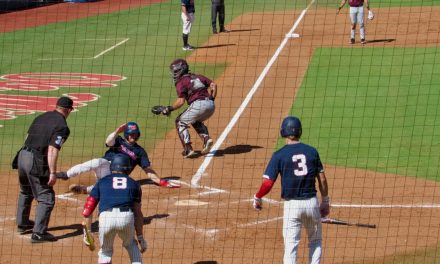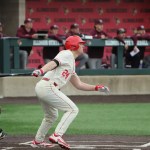NCAA Approves Two-Minute Warning, In-Helmet Communication: Lane Kiffin Believes the Communication will be ‘Like A Cheat Code’
by Evelyn Van Pelt | Apr 19, 2024 | Football |
OXFORD, Miss. — On Friday, the NCAA Playing Rules Oversight Panel officially approved a two-minute warning as well as the use of helmet communication and sideline tablets in the Football Bowl Subdivision for the 2024 season.
The changes were proposed by the NCAA’s football rules committee back on March 1.
What it Means
In games involving FBS teams, in-helmet communication is now permitted for one player on the field for each team. As is the case in the NFL, this player will be signified by a green dot on the helmet. The communication will be cut off with 15 seconds left on the play clock or when the ball is snapped, whichever comes first.
“The intent is to get a little closer to what the NFL has done to allow communication,” Georgia head coach and committee co-chair Kirby Smart said last month. “It’ll allow communication with a quarterback and someone on defense, and we’ll find out where it takes us.”
‘I think it’s like having a cheat code’
Earlier this spring, Ole Miss head coach Lane Kiffin was asked about the helmet communication, something the Rebels worked with during spring camp in anticipation of this rule change.
“I’ve been part of those conversations for a long time,” Kiffin said last month.
“They’re usually defensive head coach driven. It’s here, and we utilize it in practice. I think differently, especially after using it. I think it’s like having a cheat code in Madden offensively, and I don’t know that they’ve really thought defensively of what exactly that means. Defensive coaches always wanted it, so it’s here.”
Lane Kiffin on in-helmet communication
The conference will hire and assign the cutoff operator. And, if one team’s operations go down, both teams will cease using the communication.
A team is allowed to use the helmet communication even if the opponent chooses not to use it.
Sideline tablets
The panel also approved — for all three football divisions — the use of tablets to view in-game video. The video can include the broadcast feed and camera angles from the end zone or sideline, and teams will be allowed to use up to 18 tablets total. This is a change from the NFL, which allows only images on tablets.
The tablets are not allowed to have data or other communication access.
Two-minute warning
Additionally, the panel approved a two-minute warning for the second and fourth quarters, like the NFL. It will be a fixed point for a media timeout but not a new media timeout.
The prevailing hope is that the two-minute warning will stop broadcasters from using back-to-back TV timeouts (touchdown, commercial, kickoff, commercial). It will also allow officials to switch to the rule changes that happen in the final two minutes, such as the running clock after first downs and out-of-bounds plays.
“This is not a new or additional timeout,” rules committee co-chair and Big Ten VP of football administration A.J. Edds said last month. “This is a known position that will hopefully alleviate the impression early in the quarters where media partners have taken breaks in consecutive opportunities. This will give them a larger runway over the second and fourth quarters.”
The two-minute warning could also change various scenarios at the end-of-games, making it tougher for a team who is ahead to run out the clock, which could theoretically create more comeback opportunities.
Like this:
Like Loading...
Related
Evelyn Van Pelt
Evelyn has covered sports for over two decades, beginning her journalism career as a sports writer for a newspaper in Austin, Texas. She attended Texas A&M and majored in English. Evelyn's love for Ole Miss began when her daughter Katie attended the university on a volleyball scholarship. Evelyn created the Rebel Walk in 2013 and has served as publisher and managing editor since its inception. Email Evie at: Evie@TheRebelWalk.com





















